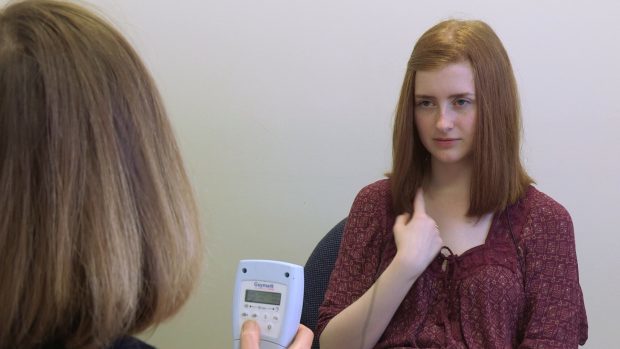Four years ago, she lost her hearing so quickly that she went back to school after the six-week summer holidays deaf.
And now, a teenager from the Western Isles has had her hearing restored by undergoing a life-changing procedure.
Rona, 16, who did not want her surname used, recently had a cochlear implant in her left ear to help her hear in noisy surroundings, after having one installed in her right ear a year ago.
The new implant allowed Rona to experience a recent live performance by pop group One Direction at the SSE Hydro in Glasgow, and she was also invited backstage to meet her idols when they heard her story.
The schoolgirl, of Scalpay in Harris, went from singing in the Mod to being profoundly deaf during a six week summer holiday at the age of 13.
Problems with her hearing were noticed by the conductor of the choir when she started singing out of tune.
She features in a documentary which will be broadcast on New Year’s day, titled The Switch On, which follows five patients through assessment, surgery, switch on and rehabiliation.
The programme offers an emotional and poignant insight into the work of the Scottish Cochlear Implant Unit at Crosshouse Hospital, Kilmarnock.
During the documentary Rona talks about the frustrations of losing her hearing. She said: “The hardest part of going deaf was that I needed a lot of help from other people, and I don’t like that. This had a huge impact on me in school because a lot of the classes were fairly large with loads of people talking, so I could not hear what the teacher was saying.”
Following the One Direction concert at the end of her rehabilitation, Rona said: “Without the implants, I don’t think I would be interested in going to college or university, but at the same time, just because someone is deaf, it does not mean they can not do anything productive with their life.”
Half a million profoundly deaf people worldwide have had their hearing restored thanks to cochlear implantation.
The Crosshouse unit is the only one of its kind in Scotland and in the past 25 years, the team have implanted 1,400 people. However, research suggests only 5-10% of the people who need such an implant are being referred.
The results of the procedure can be life-changing, but the risks are also high. In cochlear implantation, the surgeon is working within millimetres of the brain and the process of implanting the electrode damages the cochlear hair cells and as a result, affecting the hearing that is already there.
